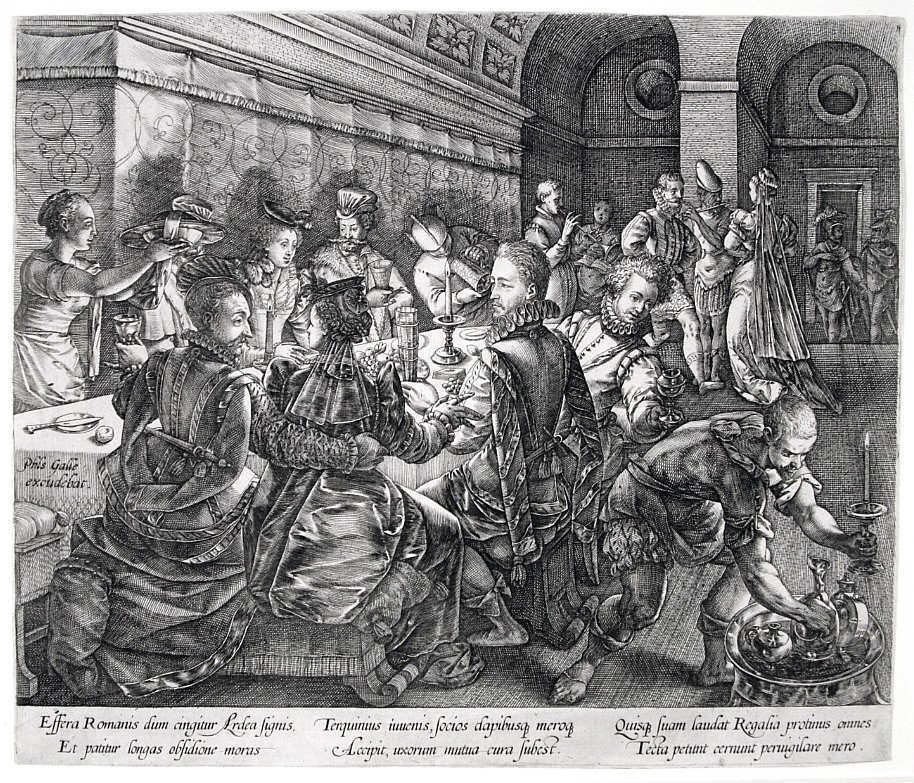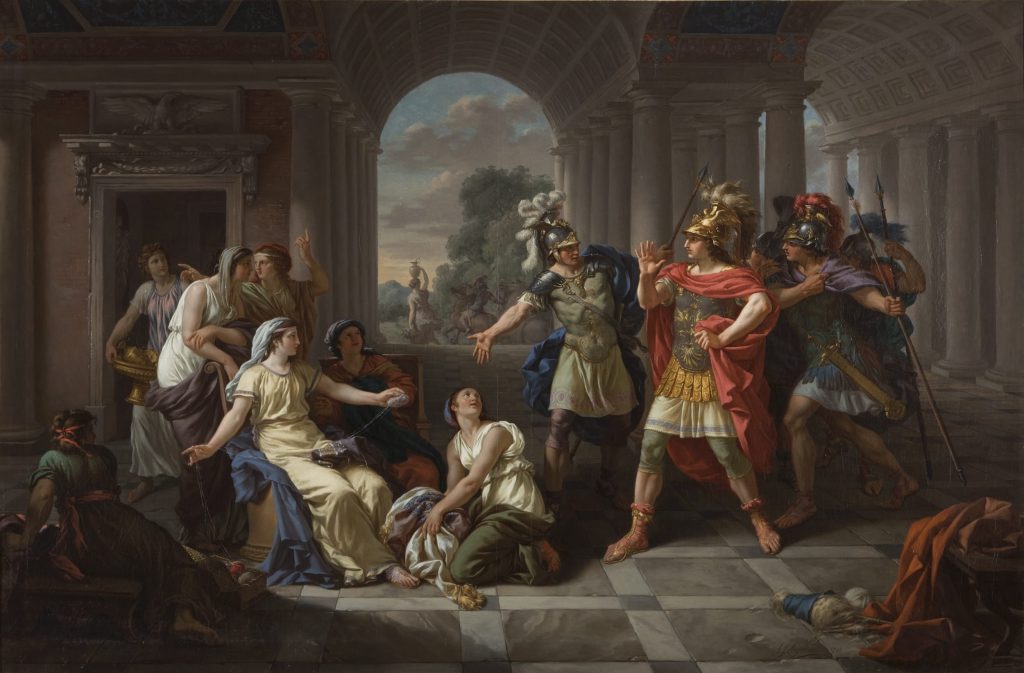
Photo courtesy Sotheby’s, Wikimedia Commons Lucretia wielding a dagger before her suicide. Lucrecia, 1525, Monogrammist I.W. active in the Cranach studio c. Tarquin was received with great hospitality at the governor’s mansion, home of Lucius Tarquinius Collatinus, son of the king’s nephew, Arruns Tarquinius, former governor of Collatia and first of the Tarquinii Collatini. Spurius Lucretius, father of Collatinus’ wife Lucretia and prefect of Rome, made sure that the king’s son was treated as a guest and a figure of his rank. While engaged in the siege of Ardea, Lucius Tarquinius Superbus, the last king of Rome, sent his son, Tarquin, on a military errand to Collatia. This approximate date is met with consensus by other historians however, the exact year is debatable within a range of about five years. According to Dionysius, Lucretia therefore died in 508 BC. Dionysius of Halicarnassus sets this year “at the beginning of the sixty-eighth Olympiad … Isagoras being the annual archon at Athens” that is, 508/507 BC. Photo via Wikimedia CommonsĪs the events of the story move rapidly, the date of Lucretia’s rape is most likely the same year as the first of the fasti. Sexual Assaultĭead Lucrecia (1804), by Catalan sculptor Damià Campeny. Because of her devotion to her husband, Roman writers Livy and Dionysus outline Lucretia as the role model for Roman girls. In contrast, they find Lucretia home alone, working with her wool in silence. The men return home to find the women socializing with each other, presumably drinking and in conversation. The men fight over which of their wives best exemplified sophrosyne, an ideal of superb moral and intellectual character. The narrative begins with a bet between the sons of Tarquinius and their kinsmen, Brutus and Collatinus. As with Livy, Dionysius’ depiction of Lucretia separates her from the rest of Roman women in a story about the men returning home from a battle.

While her husband was away at battle, Lucretia would stay at home and pray for his safe return.

According to Livy, Lucretia was an exemplar of “beauty and purity,” as well as Roman standards.

The marriage between Lucretia and Collatinus was depicted as the ideal Roman union, as both Lucretia and Collatinus were faithfully devoted to one another. Lucretia was the daughter of magistrate Spurius Lucretius and the wife of Lucius Tarquinius Collatinus. Photo courtesy Musée des Augustins, Wikimedia Commons A less common depiction of Lucretia weaving with her ladies. Willem de Poorter’s Lucrèce à l’ouvrage (1633). Much like the rape of the Sabine women, Lucretia’s story provides an explanation for historical change in Rome through a recounting of sexual assault against women. According to modern sources, Lucretia’s narrative is considered a part of Roman mythohistory. However, specific details are debatable and vary depending on the writer. The evidence points to the historical existence of a woman named Lucretia and an event that played a critical part in the downfall of the monarchy. Secondary sources on the establishment of the republic reiterate the basic events of Lucretia’s story, though accounts vary slightly between historians. Information regarding Lucretia, her rape and suicide, and the consequence of this being the start of the Roman Republic, come from the accounts of Roman historian Livy and Greco-Roman historian Dionysius of Halicarnassus approximately 500 years later. There are no contemporary sources of Lucretia and the event. As a result, the prominent families instituted a republic, drove the extensive royal family of Tarquin from Rome, and successfully defended the republic against attempted Etruscan and Latin intervention. The incident kindled the flames of dissatisfaction over the tyrannical methods of Tarquin’s father, Lucius Tarquinius Superbus, the last king of Rome.

Lucretia’s story provides an explanation for historical change in Rome through a recounting of sexual assault against women.Īccording to Roman tradition, Lucretia, anglicized as Lucrece, was a noblewoman in ancient Rome, whose rape by Sextus Tarquinius (Tarquin) and subsequent suicide precipitated a rebellion that overthrew the Roman monarchy and led to the transition of Roman government from a kingdom to a republic. Photo courtesy Fitzwilliam Museum, Wikimedia Commons A depiction of Lucretia’s rape by Sextus Tarquinius.


 0 kommentar(er)
0 kommentar(er)
